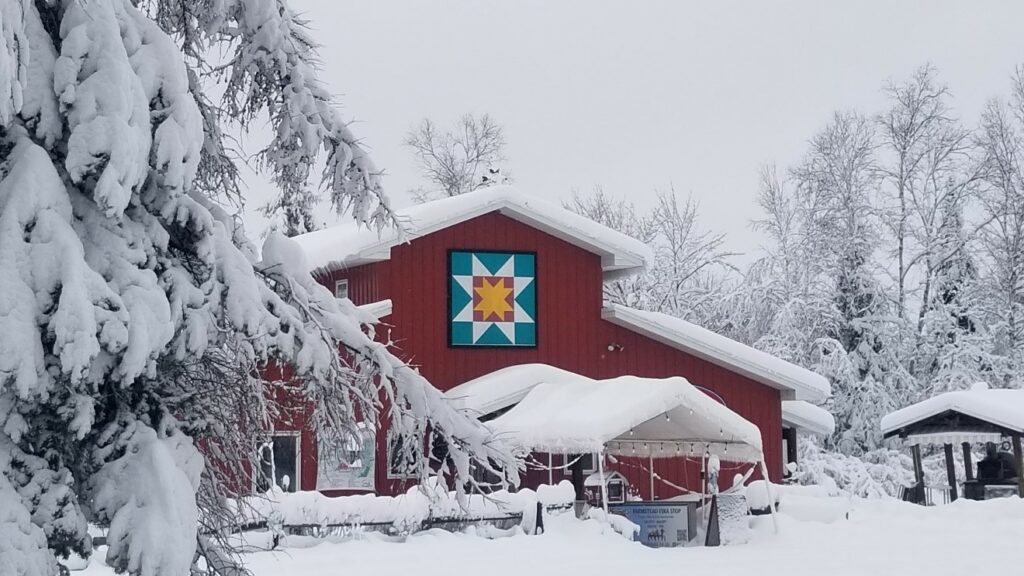White Christmas

Coming up to “North Star” (the name my grandparents always called the old homestead) for Christmas was a tradition long before I was born. Grandma and Grandpa would often arrive first, thawing out the place as no one lived up here full-time yet. Depending on when Mom wasn’t on-call with her medical practice, we would head up north either Christmas Eve or Christmas Day, and magically, Santa always knew if we were at home or at the farm.
Even the year we lived in Arizona, we came up north for Christmas. I was ready for some winter, as Christmas lights on the cactus wasn’t really cutting it for this Wisconsin child. In the desert, one of the things we missed the most was the change of seasons in the type of climate drama we’d been accustomed to.
At the farm, winter was in full regalia. A huge snow had fallen, much like the one we just experienced, and there were massive, plowed banks of snow in the barnyard. I still remember digging and tunneling, transforming the snow piles into forts, lining the tops of the walls with spiky icicles. We still talk about those snow forts to this day.
But not every year was a white Christmas. One winter, not long after my family had moved full-time to the farm, the snow was quite thin with strong blowing winds. A nearby farmer had plowed and disced his field, and the winds picked up that loose topsoil and blew it everywhere, to the point where it covered the dusting of snow on our pastures! We still remember that year as the brown Christmas because of that windblown soil. Nature doesn’t like uncovered soils in wintertime, as spring erosion is also a problem, hence the principle of “No Till November.” Much like “No Mow May” is to help the bees, not tilling late in the fall means roots in the soil help hold everything in place through the winter, preventing episodes like that brown Christmas we had here.
Having a good snowpack going into the cold snaps is critical on the farm, as this deep layer shelters perennials from the bitter conditions. It also adds insulation to coops and pig housing, like a fluffy igloo. The ice first, however, created troubles on the farm as this caused the snow to stick to everything and not let go when it needed to. This is especially troublesome for our plastic hooped structures like high tunnels and similarly constructed animal housing. Kara had a full-time job going underneath and bashing the ice free so the snow and ice could slide down instead of collapsing the structure. Just snow, rather than snow and ice, is much preferred on the farm.
As the whiteness piles high on the farm at Christmas, activities change. Fresh tracks appear, letting us know where the wildlife has been. Chickadees decide to come to the feeder as their wild foods are covered by the snow. We find ourselves sticking to the deep paths we’ve dug out, with more frequent trips to the woodshed to keep the fires burning.
Outside, the transformation by the snow is quite magical as trees bend under the load. The depth of the snow is so intense, you can see arctic blue in its shadows. Because snow crystals have so many facets as they pile up next to each other, they also have the property of deadening sound (much like soundproofing material in a recording studio), leaving the world feeling hushed outside. A chickadee sings from a birch tree, breaking the silence, but only for a moment.
In the deep snow, Christmas lights on the deck railing become dollops of color beneath the fluff. During chores, I break off an especially long icicle from a coop roof and poke it into the snow on top of a hay bale, like it’s a rotund unicorn. The dogs romp and stuff their faces into the snowbank, sniffing for something I’m sure.
Certainly, the snow makes for plenty of work on the farm, but it also creates scenes of magic and wonder. Christmas at “North Star” just isn’t the same without it, and nature was certain we would have quite the white Christmas this year.
Wishing for you and your loved ones a happy and healthy holiday season! See you down on the farm sometime.





